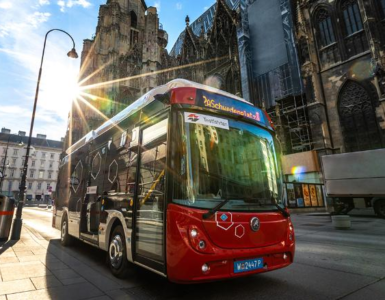Two new reports show viability of widespread use of battery electric vehicles in trucking operations.
Battery electric vehicles (BEVs) seem to be having a polarizing effect on people. They are either for them or against them and that is true even in the commercial vehicle market. It can be difficult to determine if BEVs make sense because there is a great deal of misinformation about what they can and cannot do.
In an attempt to provide some clarity to the situation, the North American Council for Freight Efficiency (NACFE) conducted Run on Less – Electric DEPOT, a three-week demonstration of BEVs in the real world.
During the Run, NACFE tracked the activity of 22 electric trucks — including three Tesla Semis — but also looked at total depot electric energy and fuel for all the trucks per day and what that would mean in total electrical energy if all trucks at the depot were converted to electric vehicles.
Mike Roeth, NACFE’s executive director, said:
This recent Run on Less event and Run on Less – Electric, which we conducted in 2021, along with our ongoing research shows that battery electric trucks are a viable option for some fleets today.
“While BEVs make sense in some applications, there are some challenges to wide scale deployment and the industry is working on improving their total cost of ownership.”
Since the conclusion of the Run in September 2023, NACFE has published two reports. Electric Truck Depots Are Evolving: How 10 Fleets Grew Their EV Populations gives an inside view of what it took for 10 fleets to grow the number of BEVs in their daily operations. Run on Less – Electric DEPOT: Scaling BEVs in the Real World provides an in-depth analysis of the data collected during the three weeks the trucks were tracked.
“I am certain there is a lot of information in these two reports and the other work we do that will help trucking fleets in their efforts to decarbonize the movement of goods in North America,” Roeth adds.
Initial conclusions cited in the first report are:
- Small depots are ready for electrification now.
- Large depots are possible and gaining momentum.
- There have been big technology and production improvements since Run on Less – Electric in 2021.
- The trucking industry needs cost and weight reductions to improve TCO.
- Range can be extended with multiple charging events during a shift or en route.
- BEVs are empowering diversity and inclusion, and energizing initiative and passion.
- Powering up infrastructure is taking too long, but portable/temporary charging is helping.
After further analysis of the data, NACFE came to four additional conclusions.
- Electric vans, trucks and heavy-duty tractors are on the road today and are performing well in many duty cycles. Despite challenges, many fleets are deploying BEVs at scale in their operations. This list includes not only the 10 fleets that participated in Run on Less – Electric DEPOT but also companies like Amazon, NFI and IKEA.
- Infrastructure, both at the depots and strategically placed along freight corridors, is needed now. One stumbling block to depot electrification is the need for a wider charging network. The place to begin is at or between depots along a freight corridor.
- Heavy-duty tractor OEMs should make cost and weight improvements a priority. It is still difficult for many fleets to make the TCO case for BEVs based solely on hard costs, but factoring things like driver satisfaction and achieving sustainability goals can result in a better TCO case.
- More reliable data on all key performance metrics is needed. There is a need for better quality performance data on BEV operations — not measured solely on the vehicle, but also measured at the charger, at the depot and from a utility perspective. It takes a joint effort from a variety of sources to electrify a depot and each of these participants requires their own type of data for different reasons.
Rick Mihelic, NACFE’s director of emerging technologies and lead author of the report, said:
These additional findings are things that everyone involved in the move to decarbonize freight movement can be working on.
“We have built up quite a bit of data that demonstrates that BEVs are working in a wide variety of transportation applications, but we are aware that there are still issues that need to be addressed. Collaboratively and collectively, we can address the changes and improve the TCO case for BEVs for more fleets.”
The Run featured a variety of trucks covering a full range of duty cycles at featured fleets including Frito-Lay, OK Produce, Penske, PepsiCo, Performance Team, Purolator, Schneider, UPS, US Foods and WattEV.
READ the latest Batteries News shaping the battery market
Two new reports show viability of widespread use of battery electric vehicles in trucking operations. source









